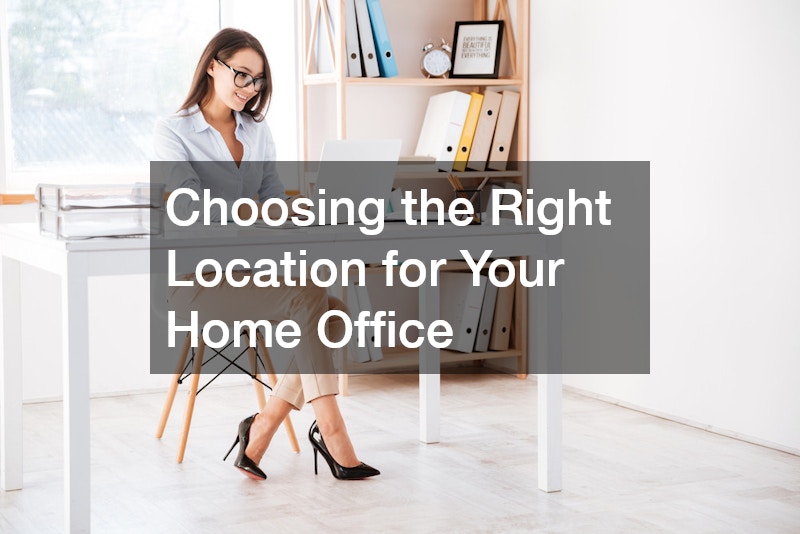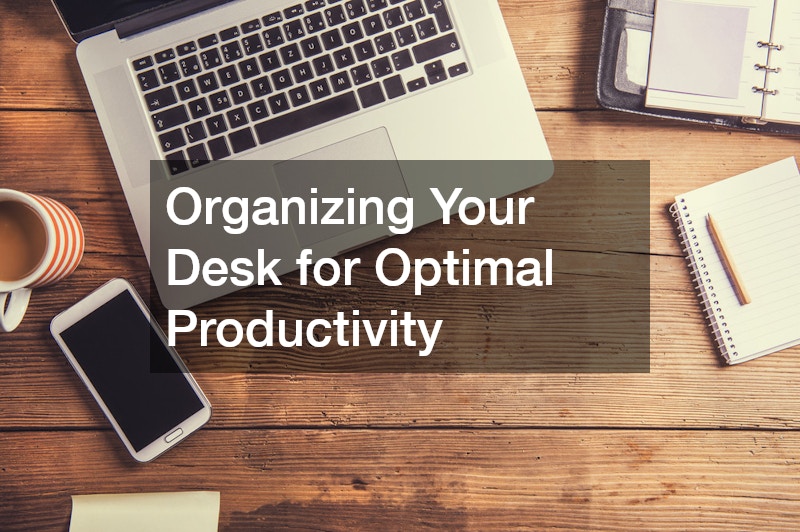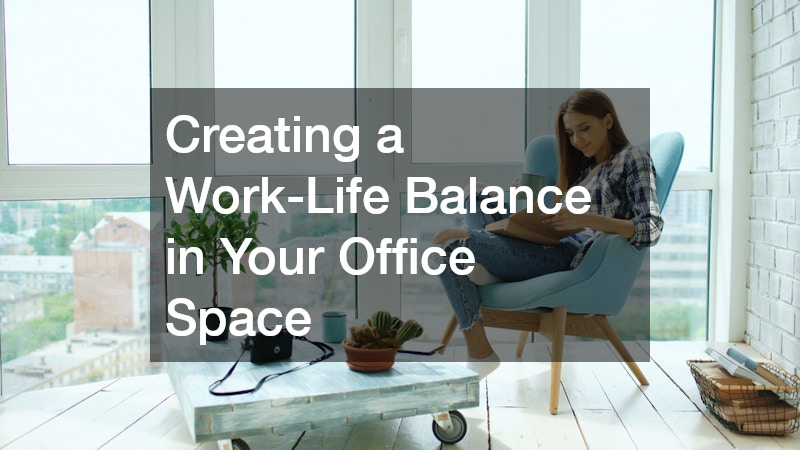Designing the perfect home office goes beyond simply placing a desk and chair in a quiet corner of your home. A well-designed workspace can significantly impact your productivity, creativity, and overall well-being. The goal is to create an environment that encourages focus and helps you stay organized while also being comfortable and inspiring.
Whether you’re working remotely full-time or part-time, designing your home office with intention can transform your workday. The key is to consider your needs and preferences, plan out the space thoughtfully, and choose elements that support both function and style. In this blog, we’ll explore several important aspects of home office design, offering practical tips and ideas to help you craft the perfect workspace.
Choosing the Right Location for Your Home Office

When it comes to designing your home office, the location you choose plays a critical role in how effective and comfortable your workspace will be. A well-situated office can reduce distractions, boost focus, and provide the best possible environment for productivity. Ideally, your office should be in a quiet area away from the hustle and bustle of daily life, especially if you’re balancing work with other home responsibilities. A dedicated room or a secluded corner of the house is often the best choice, but the main goal is to carve out a space that allows you to work without frequent interruptions.
To take things a step further, think about how the natural light, ventilation, and layout of the space will contribute to the ambiance of your home office. For example, positioning your desk near a window can give you a pleasant view and ample natural light, which can improve your mood and help you stay energized throughout the day. A real estate agent can assist in finding the perfect home with a dedicated office space or guide you in remodeling a room to maximize its potential.
Maximizing Natural Light in Your Workspace
Natural light is one of the most important factors in creating an inviting and energizing home office. Studies show that exposure to natural light can improve mood, increase alertness, and even regulate sleep patterns. For these reasons, it’s crucial to incorporate as much natural light as possible into your workspace. A bright, well-lit room can make you feel more connected to the outside world and boost your overall productivity.
In addition to its many benefits, natural light can also improve the physical environment of your office. Sunlight can reduce eye strain caused by artificial lighting and prevent the room from feeling overly stuffy or enclosed. If you’re dealing with a noisy environment or external distractions, soundproof window installation can also help improve the quality of your workspace by blocking out noise without compromising the light. By thoughtfully considering how natural light enters your office and making simple adjustments, you can create a healthier and more productive work environment.
Selecting Comfortable and Functional Furniture
The furniture you choose for your home office is more than just decorative; it needs to support your work habits and overall well-being. A comfortable, functional office setup will help you stay focused, minimize physical strain, and boost your productivity. Key pieces like a supportive chair, a spacious desk, and convenient storage solutions can make a world of difference.
Your furniture choices should reflect both your style and your work needs. For example, if you spend long hours at a computer, investing in an ergonomic chair that supports your posture can prevent back pain and fatigue. Similarly, a well-designed desk with ample space for your computer, documents, and other tools will keep your workspace organized and efficient.
When selecting furniture for your home office, it’s important to strike a balance between comfort and functionality. Consider working with an office furniture company to find pieces that offer both quality and practicality. Ergonomically designed chairs, desks with adjustable heights, and furniture that can easily accommodate your storage needs are all great options to consider. By investing in pieces that promote a healthy work environment and suit your personal style, you can create a home office that feels both inviting and productive.
Organizing Your Desk for Optimal Productivity

A cluttered desk can quickly become a major source of stress and distraction, undermining your ability to focus and work efficiently. Organizing your desk is one of the simplest and most effective ways to improve your home office environment. Start by clearing the clutter and keeping only the items that you use regularly on your desk. Tools like trays, organizers, and filing cabinets can help keep important documents and supplies easily accessible without creating visual chaos.
If you’re dealing with limited space or need additional storage, a self storage facility can provide an easy solution for keeping excess items out of sight but still within reach. Storing seasonal materials or unused office equipment in a storage unit can help free up space on your desk, creating a more organized and productive environment. Whether you need to keep files, office supplies, or personal items out of the way, utilizing a self-storage facility can give your home office the breathing room it needs to thrive.
Incorporating Ergonomic Design into Your Office
Incorporating ergonomic design into your home office is crucial for ensuring comfort and reducing the risk of physical strain during long workdays. Ergonomics focuses on designing a workspace that promotes healthy posture and minimizes the potential for repetitive stress injuries. The foundation of ergonomic design includes selecting furniture that supports your body’s natural alignment, such as an adjustable chair with lumbar support and a desk that allows your arms to rest comfortably while typing. Additionally, positioning your monitor at eye level and keeping your keyboard and mouse at the correct height can prevent neck, shoulder, and wrist pain. Proper ergonomics can also involve taking breaks to stretch and move, which helps reduce the risk of muscle fatigue and improves circulation.
To achieve the best ergonomic setup, it might be helpful to consult with a home insulation contractor who can help optimize the acoustics and thermal comfort of your office. A properly insulated space not only improves energy efficiency but also enhances your comfort, making it easier to focus for extended periods without distractions from temperature fluctuations or outside noise.
Personalizing Your Home Office for Inspiration
A home office should be more than just a functional space; it should also be a reflection of your personality and creativity. Personalizing your office can help make it a place where you feel motivated, inspired, and eager to work each day. Incorporating elements that resonate with you, such as artwork, personal mementos, or meaningful decor, can foster a sense of ownership and joy in your workspace. Whether it’s through a favorite color scheme, motivational quotes, or displaying items that inspire you, these touches can create a positive atmosphere that enhances your overall work experience.
For those considering building or renovating their home office, working with a custom home builder can be an excellent way to bring your vision to life. A custom home builder can help you design a home office that suits your unique needs and personal style. Whether you want to integrate specific storage solutions, choose specialized furniture, or create an entirely new room dedicated to work, a custom home builder can guide you through every step of the process.
Managing Technology and Cables Efficiently

Technology is an integral part of any modern home office, but the wires, cables, and equipment can quickly become a tangled mess if not properly managed. A cluttered tech setup can make your workspace look chaotic and hinder your ability to focus. One of the first steps in organizing your home office is addressing your technology and cable management. Use cable organizers, clips, and trays to keep your cables neat and out of sight. You can also invest in wireless technology, such as a Bluetooth keyboard and mouse, to reduce the number of visible wires.
If your office relies heavily on technology, a visit to a computer repair store can help ensure that all of your devices are functioning properly and efficiently. A computer repair store can assist with issues such as slow processing speeds, software updates, or even setting up your home network. Ensuring that your tech is in optimal condition can prevent disruptions during your workday and reduce the temptation to work around equipment problems.
Choosing a Color Scheme for Focus and Calm
The colors in your home office can have a profound impact on your mood, focus, and productivity. Different colors evoke different emotions and can influence your energy levels and creativity. For example, shades of blue are known to promote calmness and concentration, making them an excellent choice for a space where you need to focus. Greens can enhance creativity and relaxation, while warmer colors like yellow and orange may help boost energy and motivation. The key is to choose a color palette that complements your work habits and promotes a positive environment.
In addition to color selection, it’s also important to think about the materials and finishes in your office. For example, epoxy floor coating can enhance the overall aesthetic of your home office while adding durability and easy maintenance. Epoxy flooring comes in a wide range of colors and finishes, so you can select one that aligns with the tone you want to set in your workspace. By thoughtfully combining colors and materials, you can create an office that feels both stylish and conducive to productivity.
Adding Greenery and Plants to Boost Creativity
Bringing greenery into your home office can have both aesthetic and psychological benefits. Plants have been shown to reduce stress, increase air quality, and even enhance creativity. Incorporating plants into your workspace can help create a calming environment that promotes focus and mental clarity. Whether you opt for a low-maintenance succulent, a vibrant fern, or a flowering plant, greenery can bring life and energy to your office, making it feel more inviting and less sterile. Beyond their functional benefits, plants also provide a natural element that helps soften the look of your office and adds a touch of warmth.
Incorporating plants into your home office design doesn’t have to be difficult or time-consuming. Even if you don’t have a green thumb, you can select low-maintenance plants that require minimal care. Some plants, like snake plants or pothos, thrive in low-light conditions, making them perfect for an office space. A residential electrician can also help you set up lighting that works well for plant growth, ensuring they receive the appropriate light and thrive in your home office. Whether placed on your desk, windowsill, or in the corners of the room, plants can create a harmonious and refreshing work environment.
Creating a Work-Life Balance in Your Office Space

Designing a home office requires careful consideration of your work needs and how to separate your professional life from your personal one. The line between work and relaxation can become blurred when both take place in the same space, leading to burnout and stress. To create a healthy work-life balance, it’s essential to establish boundaries in your home office design. For instance, designating a specific area for work-related tasks and keeping that area free from personal items can help mentally separate the two.
To enhance your work-life balance, consider implementing a space that facilitates both focus and downtime. If you have an attached garage, installing garage doors with easier access to outdoor spaces is a great idea. During breaks, stepping outside and taking a breath of fresh air can recharge your energy and maintain your productivity levels throughout the day. By carefully designing your space to support both work and relaxation, you can achieve a healthier, more balanced home office experience.
Designing the perfect home office requires thoughtful planning and a balance of both functionality and personal style. Whether you’re working from a dedicated room, a corner of the house, or even a converted garage, every detail—from furniture selection to electrical setups—plays a crucial role in creating a productive and inspiring space. Incorporating elements like ergonomic furniture, efficient cable management, and personalized decor can help you feel more connected to your workspace and motivated to get the job done. Additionally, don’t forget the importance of managing external factors such as noise and temperature, which can significantly impact your comfort and focus. By making informed choices about the physical environment of your home office, you can build a space that not only supports your professional needs but also fosters a healthy work-life balance, allowing you to achieve your goals with ease and efficiency.
